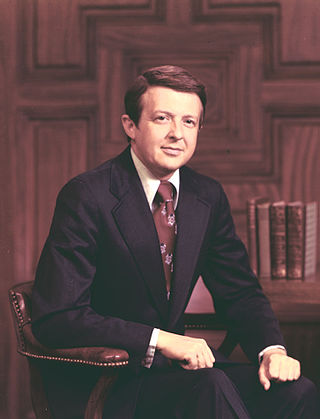
James Eubert Holshouser Jr. was an American lawyer and politician who served as the 68th Governor of North Carolina from 1973 to 1977. He was the first Republican candidate to be elected as governor of the state since 1896. Born in Boone, North Carolina, Holshouser initially sought to become a sports journalist before deciding to pursue a law degree. While in law school he developed an interest in politics and in 1962 he was elected to the North Carolina House of Representatives where he focused on restructuring government and higher education institutions, and drug abuse legislation. Made chairman of the North Carolina Republican Party in March 1966, he established the organization's first permanent staff and gained prominence by opposing a cigarette tax.
New Journalism is a style of news writing and journalism, developed in the 1960s and 1970s, that uses literary techniques unconventional at the time. It is characterized by a subjective perspective, a literary style reminiscent of long-form non-fiction. Using extensive imagery, reporters interpolate subjective language within facts whilst immersing themselves in the stories as they reported and wrote them. In traditional journalism, the journalist is "invisible"; facts are meant to be reported objectively.
Vermont Connecticut Royster was the editor of the editorial page of The Wall Street Journal from 1958 to 1971. He was honored with the Presidential Medal of Freedom. He won two Pulitzer Prizes for his writing, and numerous other awards. Royster was famed for providing a conservative interpretation of the news every day, especially regarding economic issues.
Samuel Talmadge Ragan was an American journalist, author, poet, and arts advocate from North Carolina.
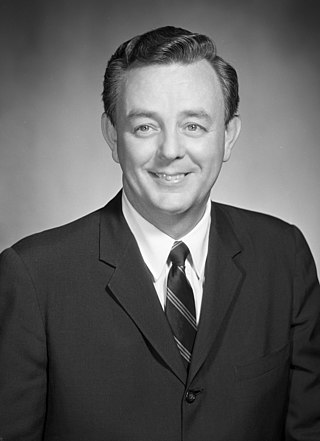
Hargrove "Skipper" Bowles Jr. was an American Democratic politician and businessman, based in Greensboro, North Carolina.

Harry Scott Ashmore was an American journalist who won a Pulitzer Prize for his editorials in 1957 on the school integration conflict in Little Rock, Arkansas.
Joseph Lenoir Chambers was an American writer, biographer, historian, and Pulitzer prize-winning newspaper editor. He served in the American Expeditionary Forces, and briefly commanded a combat company, during World War I.
Eugene Leslie Roberts Jr. is an American journalist and professor of journalism. He has been a national editor of The New York Times, executive editor of The Philadelphia Inquirer from 1972 to 1990, and managing editor of The New York Times from 1994 to 1997. Roberts is most known for presiding over The Inquirer's "Golden Age", a time in which the newspaper was given increased freedom and resources, won 17 Pulitzer Prizes in 18 years, displaced The Philadelphia Bulletin as the city's "paper of record", and was considered to be Knight Ridder's crown jewel as a profitable enterprise and an influential regional paper. As an author, Roberts received the Pulitzer Prize for history.
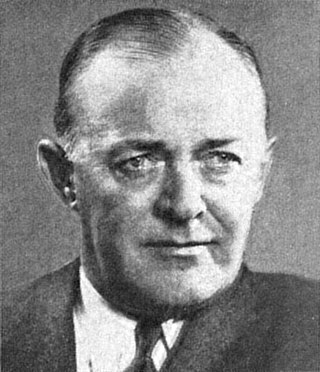
Harold Dunbar Cooley was an American politician of the Democratic Party. He represented the Fourth Congressional district of North Carolina from 1934 to 1966.
John Egerton was an American journalist and author known for his writing on the Civil Rights Movement, Southern food, history of the South, and Southern culture.
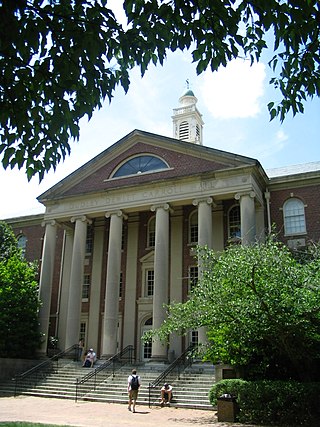
The UNC Hussman School of Journalism and Media is the undergraduate and graduate journalism school at the University of North Carolina at Chapel Hill. The school, founded in 1950, is ranked competitively among the best journalism schools in the United States. The school offers undergraduate degrees in media & journalism as well as advertising & public relations. It offers master's degrees in journalism, strategic communication, and visual communication and doctoral degrees in media & communication.
Karen Lynn Parker is an American journalist. She is the first Black woman to attend the University of North Carolina at Chapel Hill as an undergraduate student.

Julius LeVonne Chambers was an American lawyer, civil rights leader and educator.
Lucile Harris Bluford was a journalist and opponent of segregation in America's education system, and after whom the Lucile H. Bluford Branch of the Kansas City Public Library is named.
Hocutt v. Wilson, N.C. Super. Ct. (1933) (unreported), was the first attempt to desegregate higher education in the United States. It was initiated by two African American lawyers from Durham, North Carolina, Conrad O. Pearson and Cecil McCoy, with the support of the National Association for the Advancement of Colored People (NAACP). The case was ultimately dismissed for lack of standing, but it served as a test case for challenging the "separate but equal" doctrine in education and was a precursor to Brown v. Board of Education, 347 U.S. 483 (1954).

Nikole Sheri Hannah-Jones is an American investigative journalist known for her coverage of civil rights in the United States. She joined The New York Times as a staff writer in April 2015, was awarded a MacArthur Fellowship in 2017, and won the Pulitzer Prize for Commentary in 2020 for her work on The 1619 Project. Hannah-Jones is the inaugural Knight Chair in Race and Journalism at the Howard University School of Communications, where she also founded the Center for Journalism and Democracy.
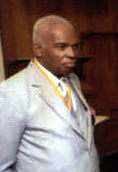
Kelly Miller Alexander Sr. was chairman of the board of directors of the National Association for the Advancement of Colored People and a civil rights activist. He was born in Charlotte, North Carolina, to Zechariah and Louise Alexander. His father was the owner of the Alexander Funeral Home, the only black funeral home in Charlotte. He played football at Second Ward High School, becoming known as "Ship-wreck Kelly." Alexander studied at the Tuskegee Institute in Alabama and Renouard College of Embalming in New York City before returning to Charlotte to help run his father's business.

Penelope Muse Abernathy is an American journalist, former media executive, author and researcher who specializes in the study of news deserts. In 2008, after senior management roles at The New York Times and The Wall Street Journal, she became the Knight Chair in Journalism and Digital Media Economics at the Hussman School of Journalism and Media at the University of North Carolina at Chapel Hill. In 2021, she was appointed a visiting professor at Northwestern University's Medill School of Journalism.
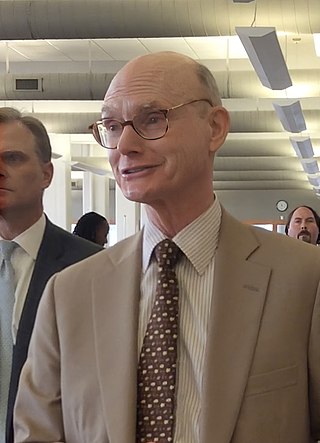
Walter Edward Hussman Jr., is an American newspaper publisher and chairman of WEHCO Media, Inc. He is the publisher of the Arkansas Democrat-Gazette in Little Rock, which is the largest newspaper in Arkansas. Hussman directs a chain of smaller newspapers, including the Chattanooga Times Free Press and the Texarkana Gazette, and owns cable television companies in four states.
The Oklahoma Eagle is a Tulsa-based Black-owned newspaper published by James O. Goodwin. Established in 1922, it has been called the voice of Black Tulsa and is a successor to the Tulsa Star newspaper, which burned in the 1921 Tulsa race massacre. The Oklahoma Eagle publishes news about the Black community and reported on the 1921 Tulsa race massacre at a time when many white-owned newspapers in Tulsa refused to acknowledge it. TheOklahoma Eagle is also Oklahoma's longest-running Black-owned newspaper. The Oklahoma Eagle serves a print subscriber base throughout six Northeastern Oklahoma counties, statewide, in 36 U.S. states and territories, and abroad. It claims that it is the tenth oldest Black-owned newspaper in the United States still publishing today.










